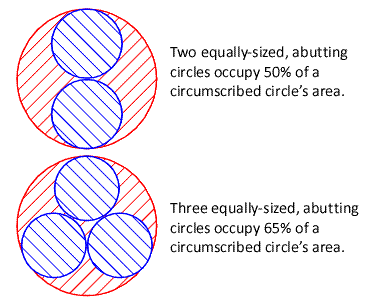wbalsam1
Senior Member
- Location
- Upper Jay, NY
- A cable is treated as 1 conductor and can take up to as much as 53% of the raceway.
- One conductor can also take up the same cross-sectional area of the raceway, namely 53%.
- Two conductors can take up to 31%
- Three or more can take up to 40%
- In a nipple (less than 24" in length) one or more conductors can take up to 60%


